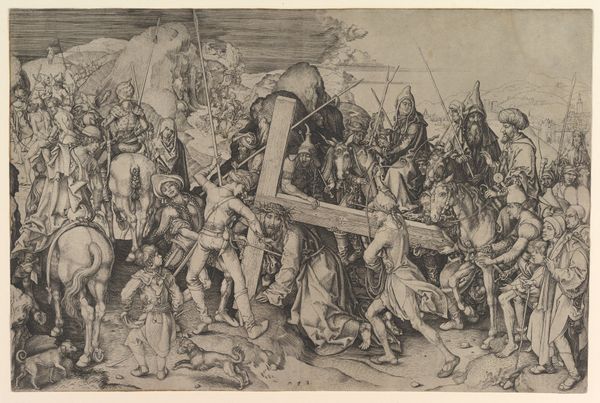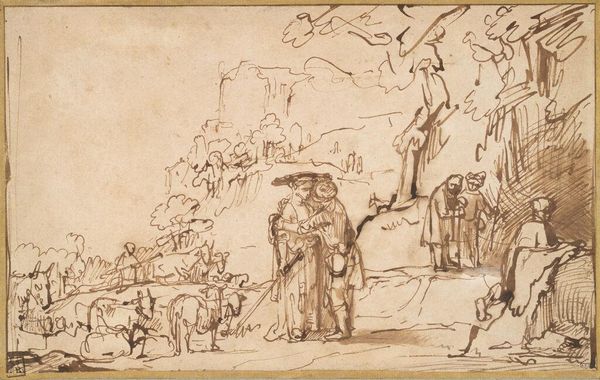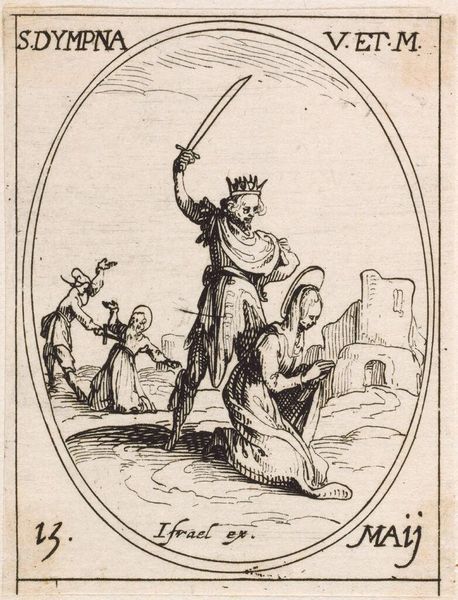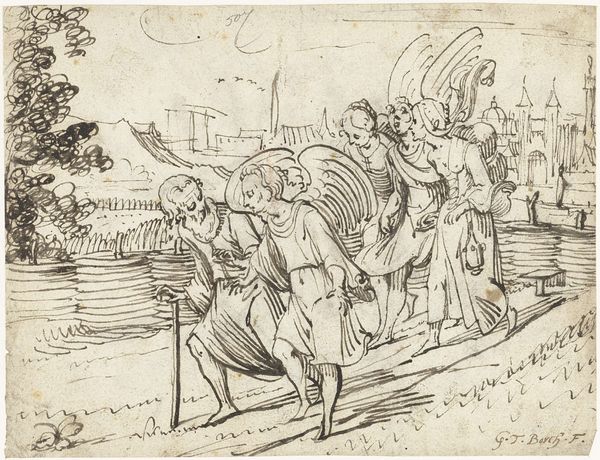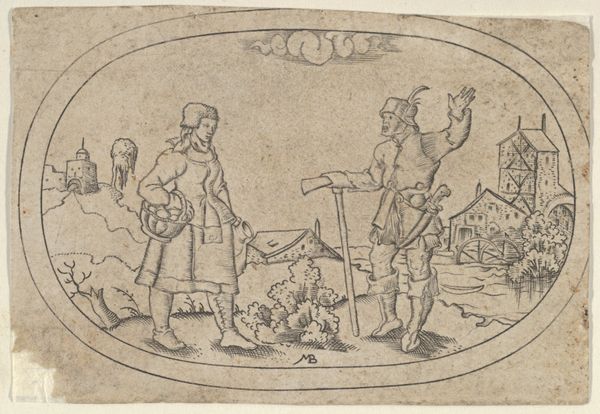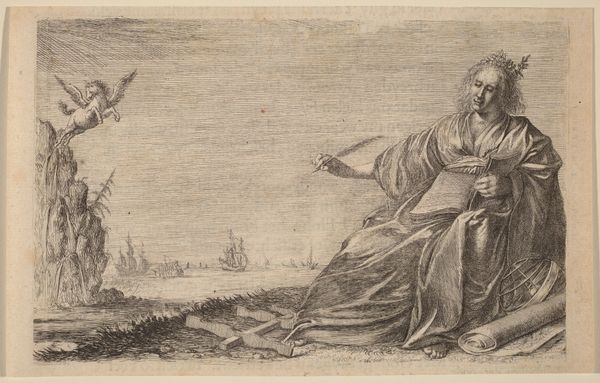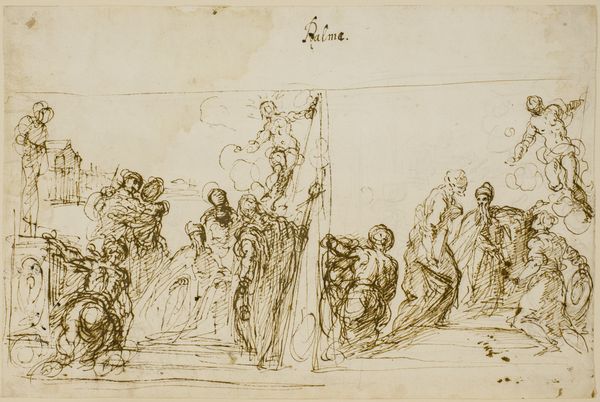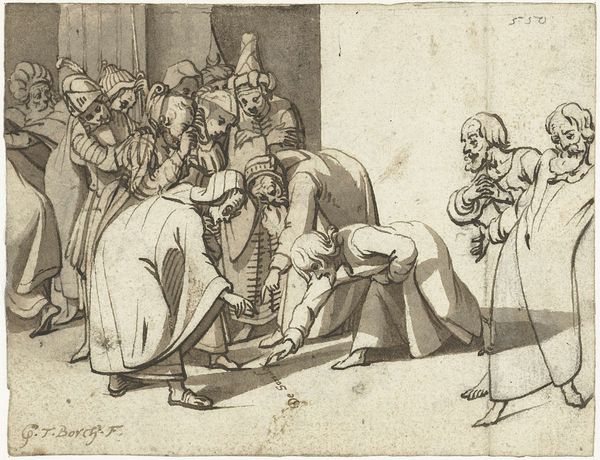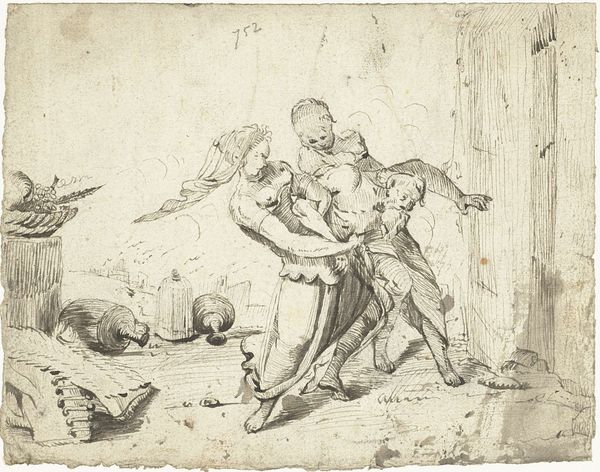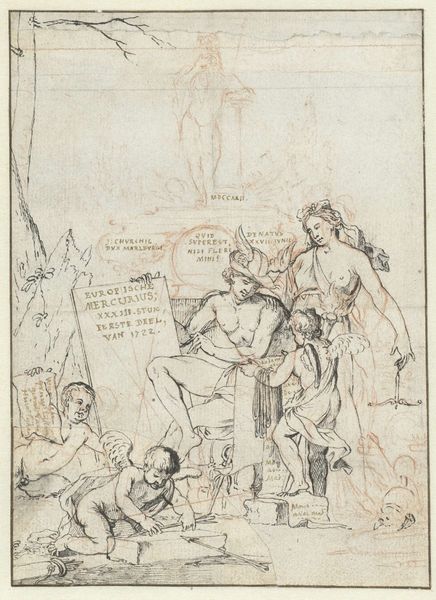
drawing, ink
#
drawing
#
baroque
#
figuration
#
ink
#
history-painting
Dimensions: height 145 mm, width 159 mm
Copyright: Rijks Museum: Open Domain
Editor: So, this ink drawing, "God Appears to Abraham," from the 1640s by Ferdinand Bol, is quite striking. The bold strokes create such drama! What do you make of the figures and their arrangement? Curator: Indeed. Consider how the light emanates not just as illumination but as divine energy. The patriarchal figure, wreathed in bursting lines, evokes not only God but also echoes of earlier sun deities—a visual echo resonating through cultures. Does Abraham prostrate himself out of fear, respect, or recognition of an ancient power? Editor: Interesting! I hadn't thought of the sun deity connection. It almost feels like the artist is layering different cultural ideas of power. How would that connect to the audience? Curator: The drawing, spare as it is, holds centuries of visual coding. Even viewers unfamiliar with the Abraham story sense power dynamics and a call to submission. Do we, even unconsciously, react to these ingrained visual cues of authority, the radiant figure, the lowered gaze? Editor: So it’s almost about how deeply these symbolic forms affect us, regardless of context. Curator: Precisely. Bol's ink doesn't merely depict; it awakens the collective memory encoded within images of power. What do you think viewers today might take away from Abraham's posture? Is it piety, fear, or something more complex? Editor: Maybe a combination, acknowledging both reverence and submission, especially relevant given our own relationships to authority, even now. Curator: A fruitful pondering, isn't it? Art invites not just observation, but self-reflection on our ingrained cultural narratives.
Comments
No comments
Be the first to comment and join the conversation on the ultimate creative platform.
